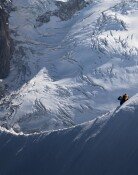[Tour] Mt. Taebaek’s Samsuryong
![[Tour] Mt. Taebaek’s Samsuryong](https://dimg.donga.com/egc/CDB/ENGLISH/Article/20/01/05/31/2001053116218.jpg)
Spring drought has continued for two months…
On the way to Taebaek City, I stopped by the Dongdaechunbyun of Sokuem River, Jungsun. White bleached stones were found scattered everywhere in the creek since the drought. Despite the lack of water, farmers were planting rice in the field in which the water was thinly covered to the edge of the brim. And the green trees were offering shadows to the farmers by covering the parched land with the color of green. I was self-conscious as I thought about the water I’ve been wasting.
This was an `eco-trip` to find the original stream of the river while appreciating the importance of water in the midst of a drought. The destination was Peejae Pass (920 m above sea level), Gummyong Pond, and Meein Waterfall at `Samsuryong` in Taebaek City, Kangwon Province.
`Samsu` indicates three rivers which cross over the southern Korean Peninsula: Han River flows into the Yellow Sea (western sea), Nakdong River runs into the Southern Sea, and Ohshipchun flows into the East Sea. Intriguingly, three rivers originate from the nearby Taebaek. Where is this place in which the origin of the three rivers dwells? It is the `Y` shaped valley where Baekdu’s mountain ranges and the veins of Nakdong River encounter. Samsuryong Pee Pass is located at the center of the valley, that is, the point of intersection. Therefore, theoretically, the raindrops fallen into Peejae Pass flow into the three different valleys. The water, which was divided into three, became the original stream of the river: they are Gummyong Pond (Han River) on the hill of Kuemdaebong, Hwangji of Taebak (Nakdong River), and the Meein Waterfall (Ohshipchun). They are located within 15 min distance by a car.
Peejae Pass, located on the national highway 35, connects Samchuck City and Taebaek City. It is easy to find Peejae since there is an information billboard that says `Samsuryong Peejae Pass`, along with the Samsuryong stone tower. There is a small parking lot and a convenient store. However, it is impossible to locate the original stream of Samsu from here. I drove off in the direction of Gummyong Pond. As I entered the forest, after having passed Ahnchangjook (town), a beautiful forest road unfolded. There were stepping-stones 700 m ahead. This might be the northernmost stone bridge of Han River.
There was a quiet path (600 m) through the forest, covered by `long` larch trees from the stepping-stones to Gummyong Pond. Although it was hot daytime, the inside of the forest was cool, as if the place had been air-conditioned. The blue water could drop in the dark forest shadow on account of the cold water of the stream that was running in between the rocks. The wild flowers seemed to have the most benefit in the `air-conditioned valley`. Tender flowers embroidered the forest path with the yellow and lavender colors.
At the end of the larch tree forest, `Gummyongjung` appeared. If one climbs onto the steep rock on the left side, there is Gummyong Pond. Only 20 m distance. The water stream was inside of the groove (width 30 cm, depth 50 cm) of the rock. The water from the pond flew like a waterfall following the 12 stair-stone (height 2m). I felt as if I was looking at a beautiful stone. ``It is great. The groove of the rock was paved by the water… How long would it take?`` Travel companion Lee Jong-Seung (president of Seungwoo Tour) asked. ``Hundred of thousands… maybe longer…``
As we climbed the rock following the water stream, we could see the original stream. It was like a `small fountain in a deep forest` (circumference 20 m). This water from a small fountain is the original stream of Han River that flows 514.4 km into the Yellow Sea at the Kangwha Bay. I dipped my hand into the water. It was so cold that I could not dip my hand more than 20 seconds. I quenched my thirst with the fountain water. ``I felt like I had drunk the whole Han River,`` Lee said. The fountain water was mysterious. Not only the water taste, but also the fact that the temperature and the volume of water were consistent.
I moved to `Meein Waterfall` passing by Taebaek City. Meein Waterfall is regarded as `the symbol of the original stream` because the original stream of Ohshipchun is not clearly defined and is difficult to approach. As I went to the Samchuck side (1.7 km), having passed by the borderline between Taebaek and Samchuck City, there was an information billboard of Meein Waterfall. From the parking lot to the Waterfall was 500 m distance. The inside of the Valley could be viewed from the middle slope of the forest path. Along with the red cliff, it looked as if the cloths from a bride’s white wedding dress were gently hanging from the cliff. It looked like a beautiful woman.
Rocks were all over the place nearby Gummyong Pond. And the white wild flowers in-between the rocks. Only the sound of nature was heard inside the valley in the daytime of May. The sound of wind that gently brushes the leaves… The sound of water dropping from the cliff… The sound of bird… Ensemble of `Meein Waterfall` was great.
- Eco-trip: Seungwoo Tour offers a `eco-trip` package (2 day trek of Gummyong Pond and Meein Waterfall). Weekend (depart on 2nd, 9th, 53,000 won) & Holidays (depart on 6th, 48,000 won) After a dawn trek at Gummyong Pond, a meal will be provided at `You and Home`. An eco-trip team, which departs on 6th, will stop by the Jungsun Market.
www.seungwootour.co.kr
Cho Seong-Ha summer@donga.com





![[단독]“男 군대가니 女도 가라는 식으로 여성징병제 문제 못풀어”](https://dimg.donga.com/c/138/175/90/1/wps/NEWS/IMAGE/2025/12/08/132907201.1.jpg)

